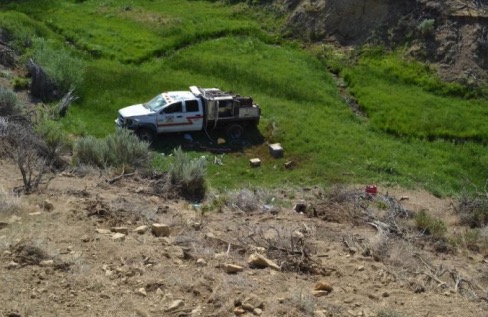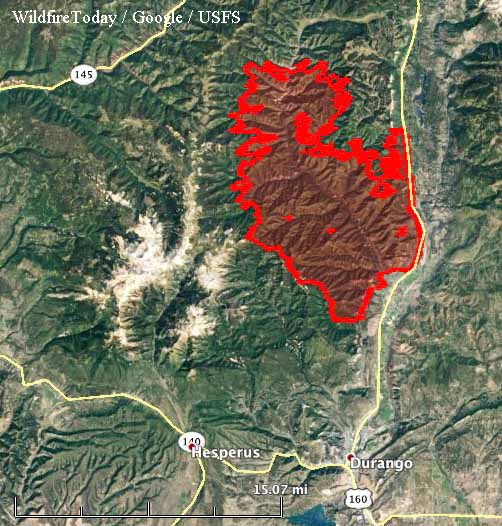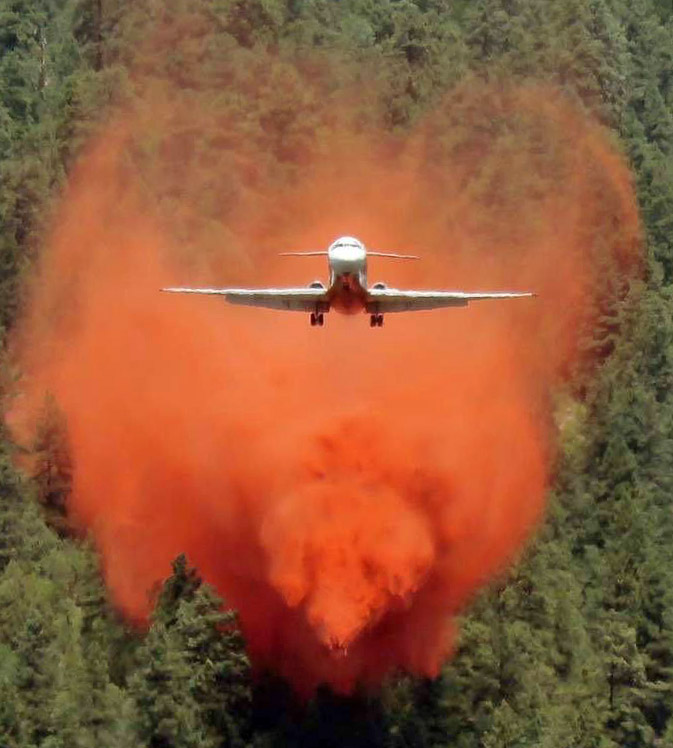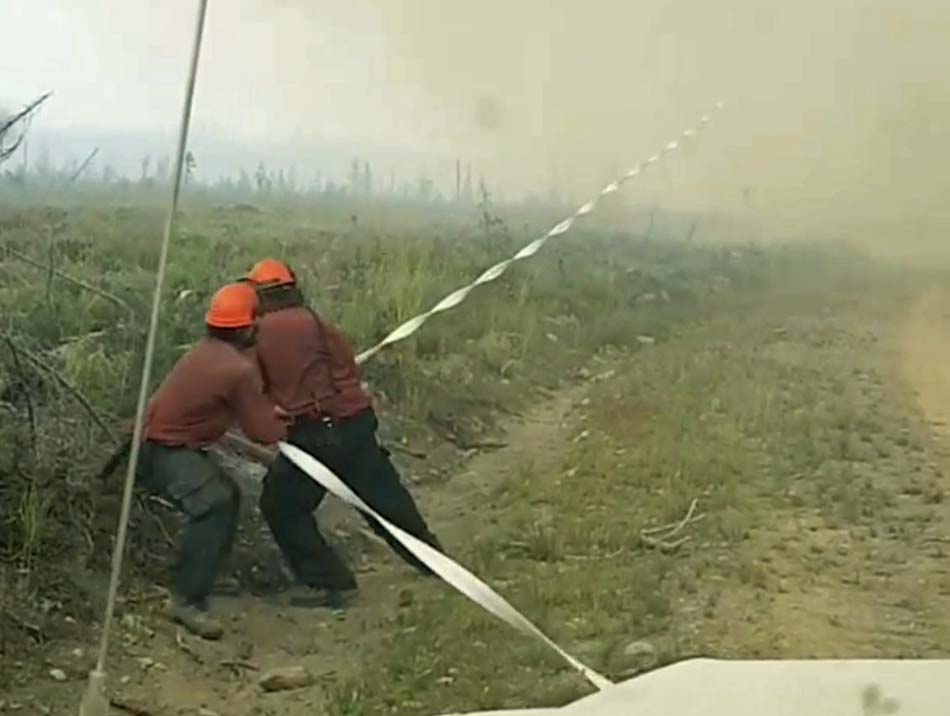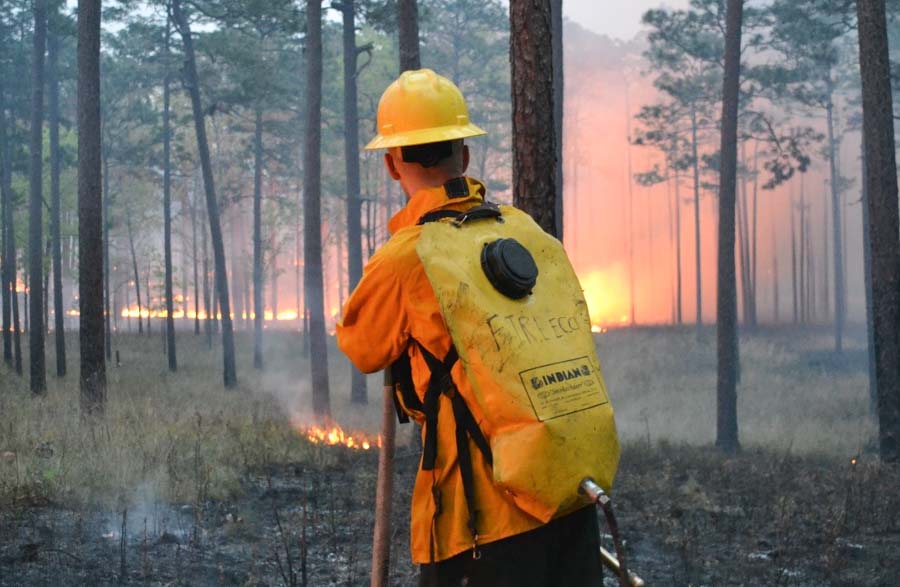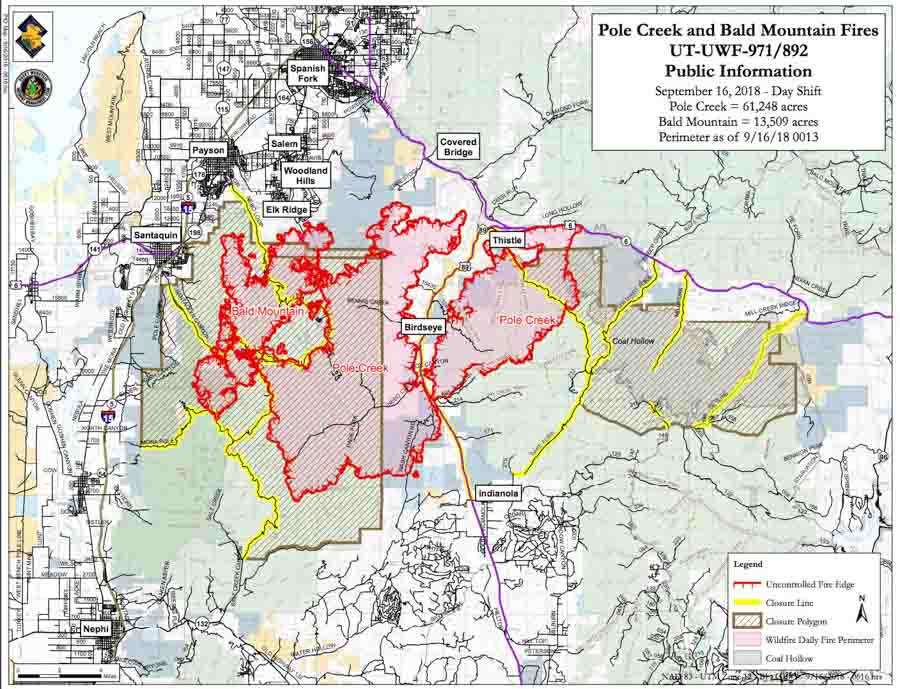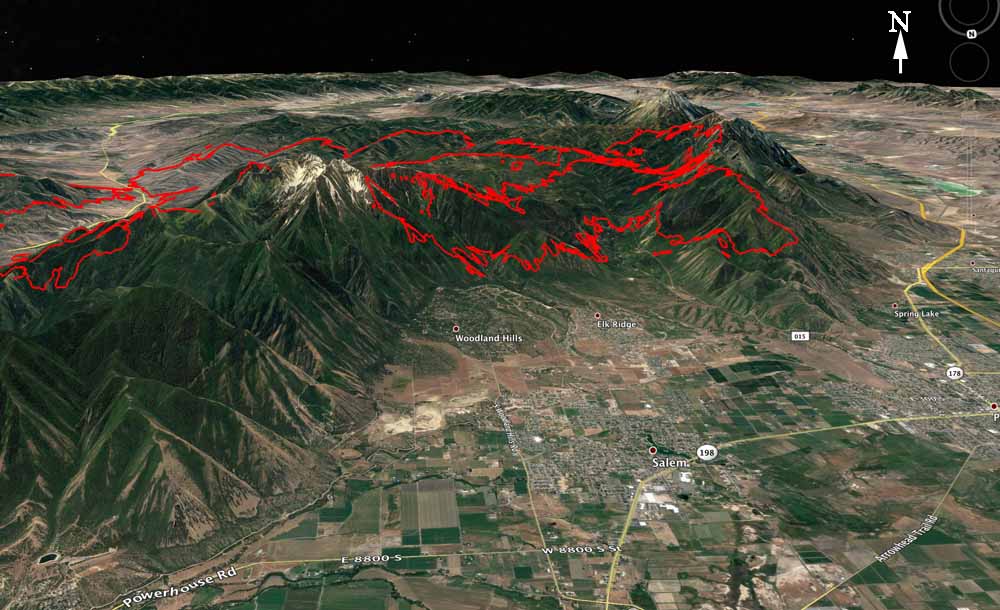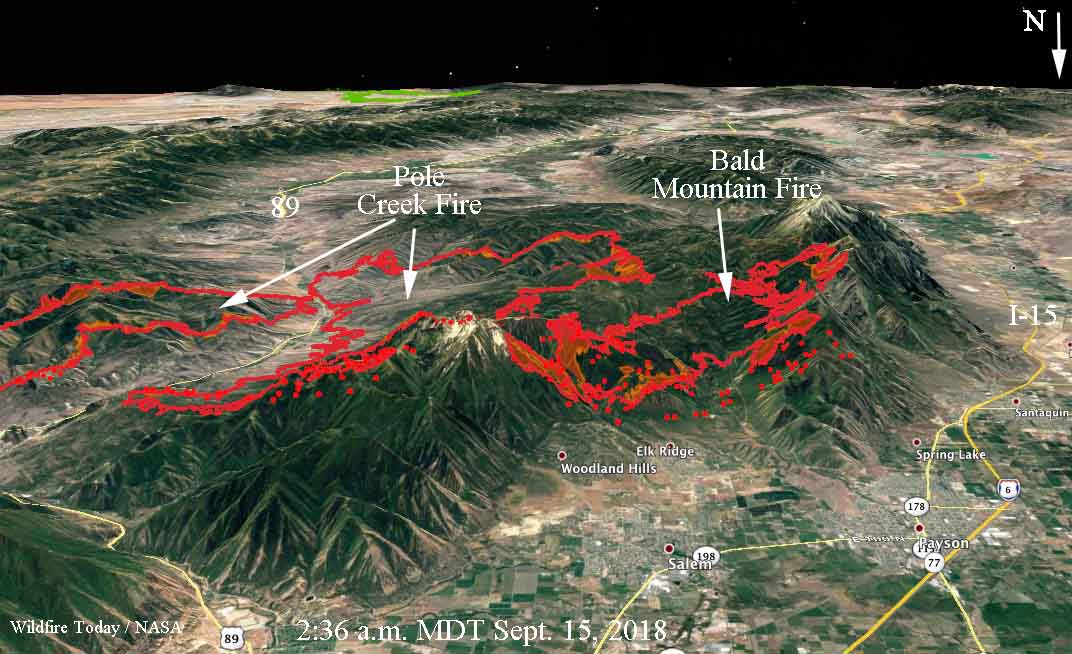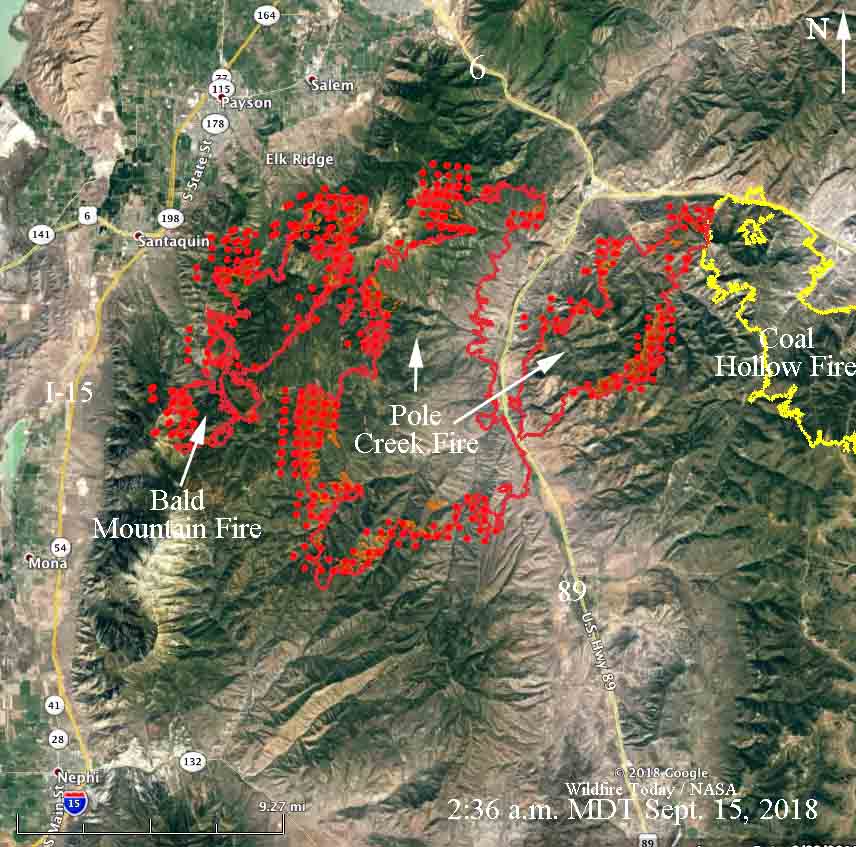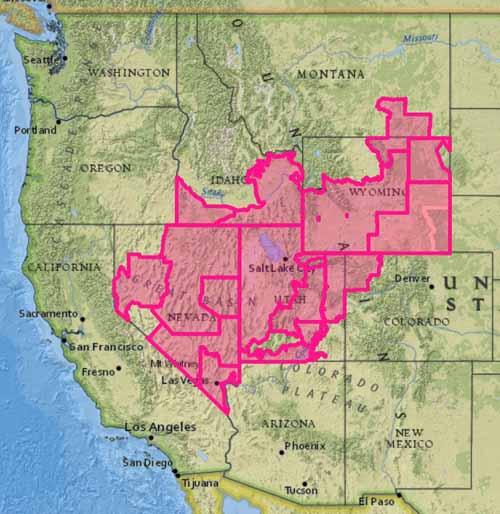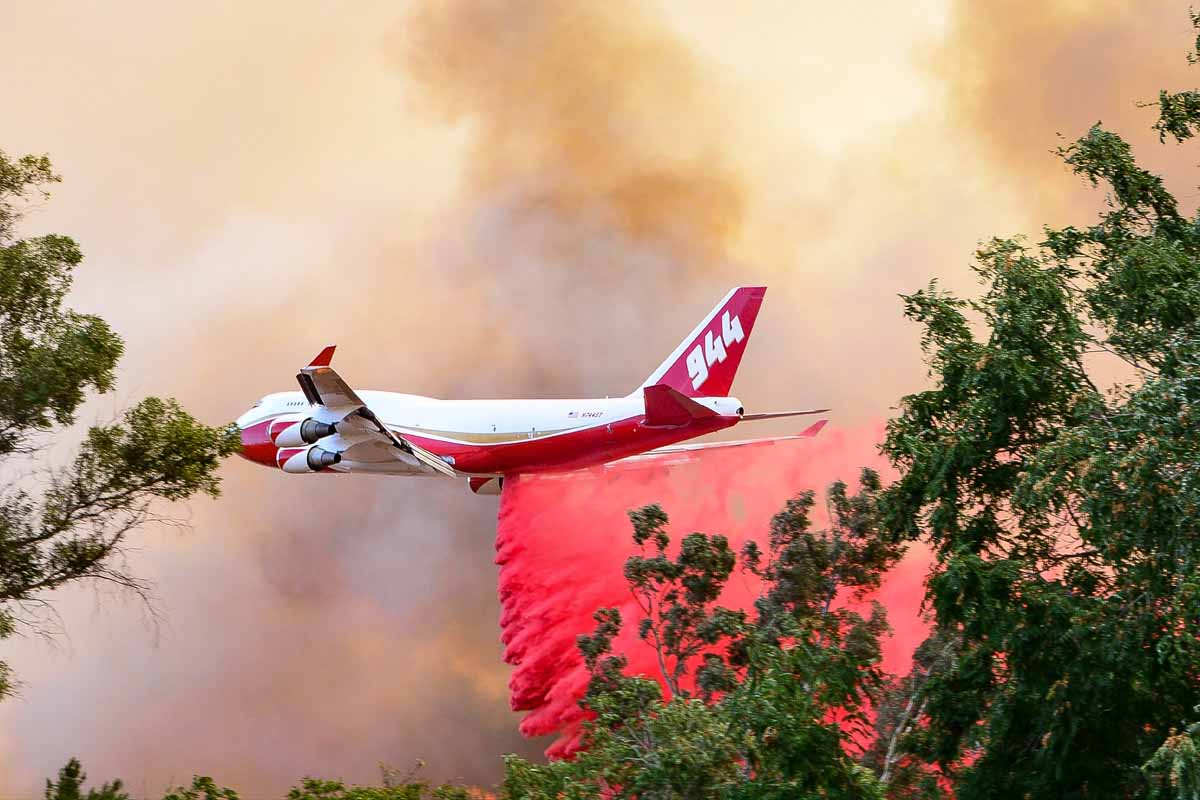Above: the photo above is from the LLR.
A Lessons Learned Review has been released for an engine that rolled over while working on the Fawn Fire near Meeker, Colorado July 8 ,2018.
The entire document is HERE. Below is the Executive Summary:
On July 8th at approximately 2325, on the Fawn Fire near Meeker Colorado, a cooperating fire department engine (Engine 1) rolled off the roadway as they were travelling from the fire back to Incident Command Post (ICP). Due to a high volume of fire traffic and very dry conditions, the road surface was extremely dusty and visibility was often severely reduced.
As Engine 1 was departing the fire area, they were the second to last vehicle in a convoy of 5 vehicles. Approximately a half mile after leaving the fire and headed back down County Road 29, Engine 1 encountered near zero-visibility due to dust and started to slow down. This reduction in visibility occurred in a short section of the road where the road bed narrowed due to erosional sloughing. Unable to see the upcoming road bed hazard, the engine operator continued driving straight as he was slowing the engine down. The front passenger [-side] tire travelled off the roadway, and the engine rolled off the embankment and down about 75 feet before coming to rest in the creek bottom back on its tires.
Although there was substantial damage to the cab of the engine, all the vehicle occupants were wearing their seat belts and only sustained minor injuries (bruising, chest and back pain). Due to the heavy dust, none of the other convoy vehicles knew immediately that the rollover had happened. A rapid response from other vehicles in the convoy occurred after it was discovered that Engine 1 had rolled off the road.
The three crewmembers of Engine 1 were assessed for injuries and then driven back to the ICP. At the ICP, an ambulance that had been called to respond met the Engine 1 crew and transported them to a local medical facility in Meeker. After a thorough medical assessment, it was determined that no serious injuries had occurred, and all 3 were released from the hospital at approximately 0630 on the morning of July 9th.
Thankfully there were no serious injuries.
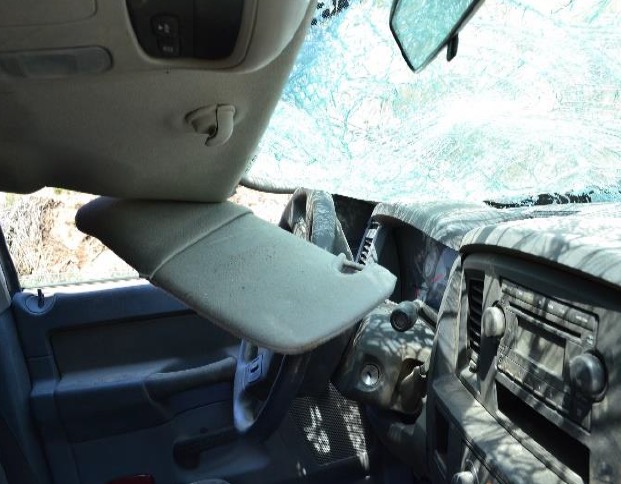
The report stated, “The Headache Rack saved the cab from crushing worse than it did.” A body-mounted “headache rack” is only designed to prevent cargo from entering the passenger compartment during a sudden stop and is far to weak to provide serious rollover protection.
This is the 59th article on Wildfire Today that is tagged “rollover”. These accidents are common, and wildland fire engines should be designed with real frame-mounted roll bars, not cheap-ass expanded metal grates protecting the glass in the rear window.
We wrote more about roll bars and headache racks HERE.
And, the photo below is from an article about real rollover protection on a fire engine.
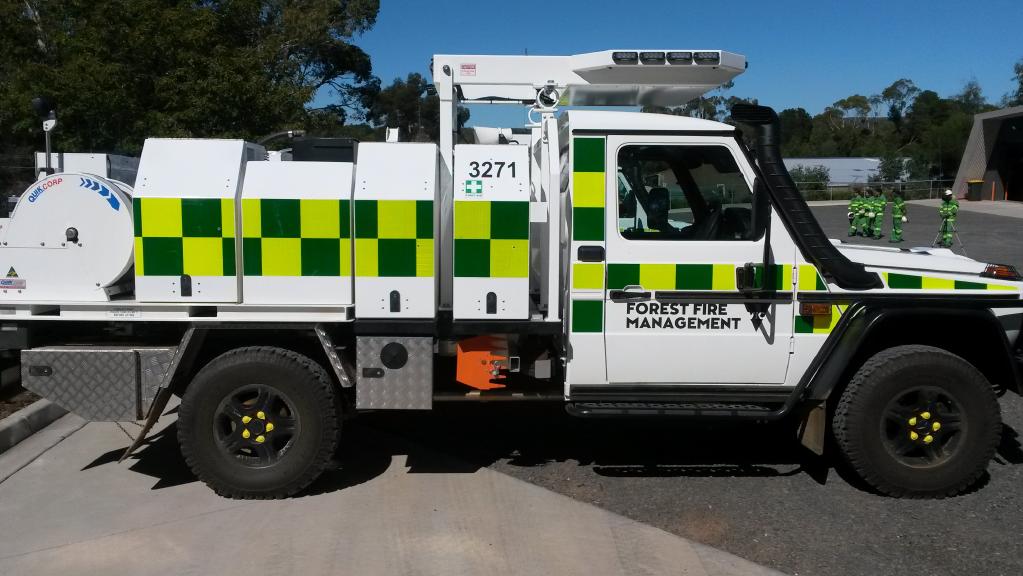
The next two photos are from the LLR.

